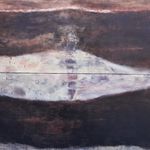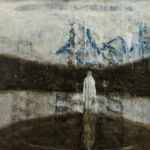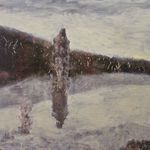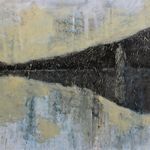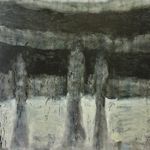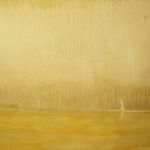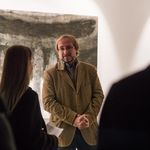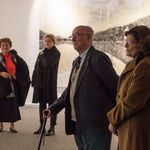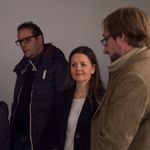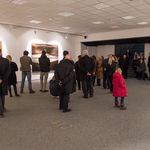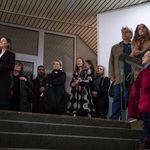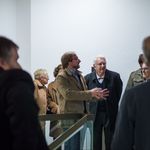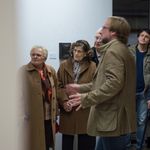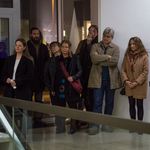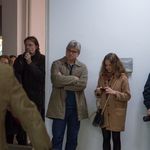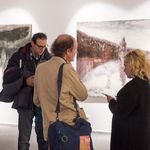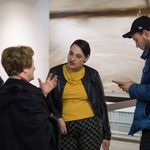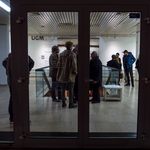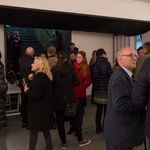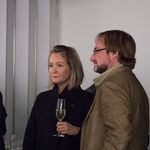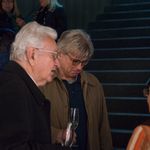Igor Banfi / Inner landscapes

Igor Banfi / Inner landscapes
UGM Studio, Trg Leona Štuklja 2
Guided tour: Friday, 10 November 2017, 18:30
Opening: Friday, 10 November 2017, 19:00
Half an hour before the opening of the exhibition, at 18:30, there will be a guided tour of the exhibition with the artist himself and Nataša Juvan, UGM curator.
Kindly invited, to join us at the opening of the exhibition Igor Banfi - Inner landscapes. Banfi’s painting is mostly dedicated to landscapes, in which an isolated and alienated human figure stands out. Sometimes the figure is symbolised with a tree or some other object. The individual in his landscapes is fatally torn between the weight of earth and the sky, where the light, suggested in the form of even a slight scorched line, often indicates hope and an exit.
“Mute earthly tones prevail in my paintings, with individual emphasis of clean, chromatic colours. Prekmurje fields and the infinite horizon are probably written in the genes of most of people, who live in Prekmurje, especially the ones no longer actively living in their home towns. That is why this topic commonly appears in my paintings, representing a spatial melancholy or even the absence of people in nature, but almost always in the symbiosis with the optimistic ray of hope somewhere on the horizon.” (From an unpublished interview, November 2009).
Inner landscapes by Igor Banfi
Painting art work by Igor Banfi is mainly dedicated to landscapes. Although for him, landscape is not only what we see around us, but also – besides his cycle Horizons – not something, that would determine a specific geographic area. Moreover, we could say that mostly in his latest work, landscape is the media through which he discusses his own personal religious thoughts, such as the thoughts about two different provinces. One represents his own inner landscape and the other is considered a landscape in the sense of a metaphor, representing a world passing by, foreign to the painter. A world, he only observes from a far, without feeling an inner connection with it. An explicit term of such religious thinking can be found in his cycle Horizons.
In the cycle Last supper, Banfi thematised a central panel of the Wittenberg altar, painted by the official reformation artist, Lucas Cranach the elder, in 1547. Luther's uncompromising conception of Christ's actual presence at Lord's dinner was a statement with which the reformer tore apart Protestantism into various distinctions. In his latest work, the artist deals with the background from the crucifying of Cranach Junior from 1571, which can be found today in Luther's house in Wittenberg, as well as Caspar David Freiderich’s painting Monk on the shore from 1809. On Cranach's painting crucifixion is put in front of a completely blank black background, which becomes a model for evangelical crucifixions until the 19 Century. Banfi ties and thematically interprets that exact black background of evangelical crucifixions with the void of Friederich's painting. The merger of both moments is the painters own interpretation of a completely new motive, which does not represent a hybrid of both of the before mentioned paintings.
Sometimes, the artist refers to Caspar David Friederich's painting Monk on shore from 1809. Robert Rosenblum marked the mentioned painting as the beginning of an eccentric northern modernistic tradition and Rothko's classic work from 1956 as the end of it. Marie Helene, the wife of Friederich's friend Gerhard von Kügelgeln, was so disappointed by the painting Monk at the shore, that she complained there is nothing to see on it, not even a sea monster. Marie Helene apparently expected a painterly scene of the marine, such that were shown in the Dutch painting of 17 Century. Friederich's painting represented only an image of a dark sky and a small image of a capuchin monk, showing the back to the viewer, with which he indicated he sees more than the viewer himself. Such silence and ratio between the micro and macro cosmos is Banfi also trying to portray. He does it by giving his paintings completely different meanings.
Friedrich's monk figure is in Banfi's work portrayed as the silhouette of a human being or a tree, until it finally becomes a sign, meaning the connection between the sky and the earth. They are separated by an infinitive horizontal line. Right over the line on the horizon, he reflects his own birth place, Prekmurje and touches the topic of the vanished Pannonian Sea. Unlike Friedrich's paintings, Banfi's work represents meditativity and inner peace. The void in his paintings isn't meditative emptiness, it is considered the emptiness of a threatening nothingness in which contradictions do not find their calm and peacefulness and there is no harmony between micro and macro cosmos. The horizon in his paintings is the destructive force, changing the person or the tree into a completely indifferent and fleeing part of cosmos.
The thing, shown in his work as the connection between the Earth and the dark sky, is always a very fragile element. A slight tilt of a changing image defines him, that image we can depict as a wandering human figure, as a mirage. His landscapes are dead and abandoned. Every attempt of meditation disappears into some kind of an anxious state. His landscapes are not painted according to nature, they also do not represent the painter's reconstruction of memory that we stumble upon with landscapes of Nikolaj Beer, which are fairly more lively and optimistic. Banfi's landscapes are painted with quick motion and seem rough. They look more like croquis, than finished paintings - as the painter was afraid that his inner seeing would slip through the sieve of time, before he would manage to properly fixate it to the canvas. His dark and pessimistic landscapes are – as the title indicates – Inner landscapes. They are a projection of the painter’s inner thoughts about the world, in which the landscape, pars pro toto, represents the whole entire world in which man finds himself in hopelessness at his time of death, at the time of the universal sinking or at the moment of Christ’s death on a cross. In his last cycle, Banfi’s inner as well as universal landscapes come together, being completely foreign to the artist. The merger of both landscapes does not find its’ salvation in the peacefulness of its contradictions, but creates a specific vibrating tension and anxiety.
Dr. Robert Inhof
Igor Banfi was born in 1973 in Murska Sobota. He studied at the Academy of arts in Ljubljana (major: painting) where he graduated in 1997, in the class of prof. Andrej Jemec. He finished the studies in 2000, under the mentorship of prof. Lojze Logar. He is a member of the Slovenian Association of artists of Prekmurje and Prlekija and The Slovenian Association of Fine Arts Societies. He lives and works in Ljubljana and Murska Sobota.
The exhibition was on display for the first time in Gallery Murska Sobota from September – November 2017.
KINDLY INVITED!
